
Dear Pickleball Operators,
If I told you that you can increase court utilization by 10% - do you have any idea how much money that can make you in a year?
Total revenues are a function of two variables: court utilization and average hourly rate. At $50 per hour, a 10% increase in utilization equates to more than $200,000 a year for a ten court pickleball club.
Court utilization and average hourly rate are the essential inputs to your club’s revenue equation. Small increases in these inputs can lead to large increases in revenue. All of the business decisions you make for your pickleball club - everything from membership structure to peak vs off peak pricing to programming - can be improved if viewed through the lens of court utilization and average hourly rate.
In this blog, we break down the pickleball club revenue equation, visualize the relationship between court utilization and average hourly rate, and then look at ways that clubs can bend the revenue equation to their advantage.
Court utilization for a pickleball club is equal to the amount of court hours utilized by customers divided by total available court hours. Annual available court hours are a function of the number of courts, hours open per day, and number of days open per year.
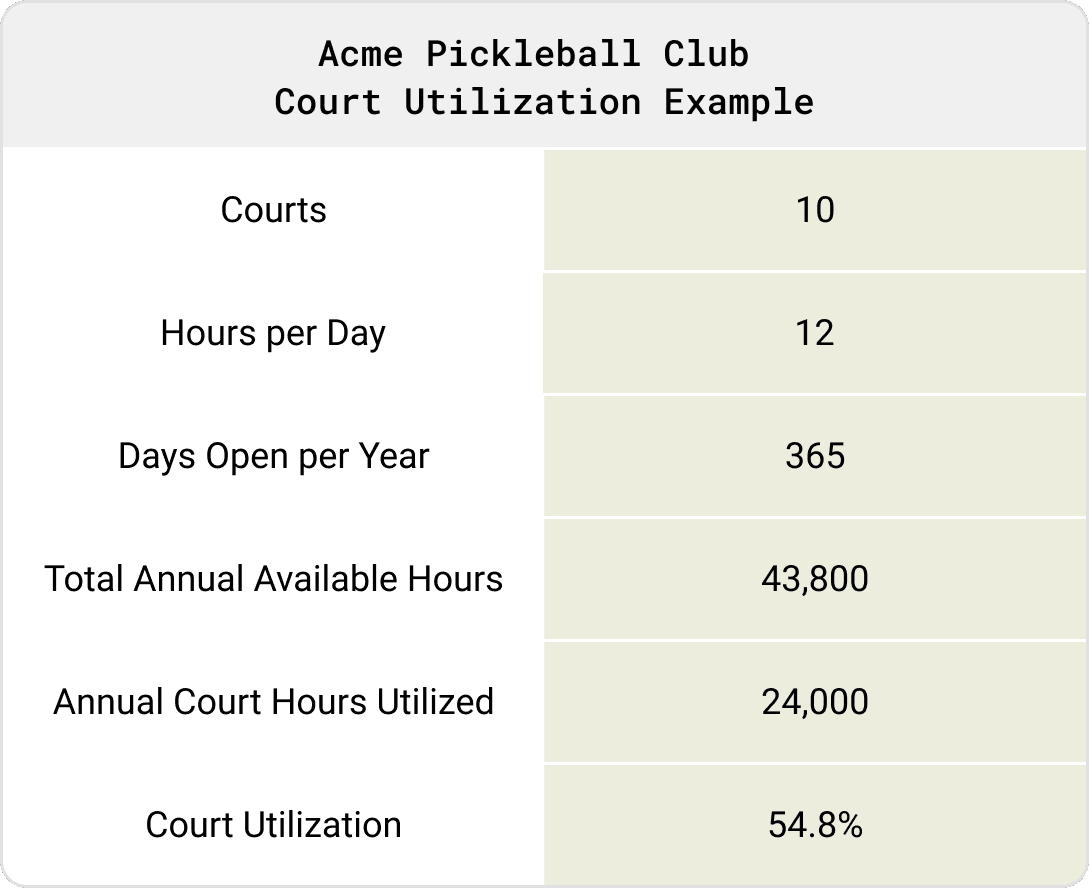
Average hourly rate for a pickleball club is equal to total revenue for a period divided by the court hours utilized by customers during the period. Club operators can think of this as a measure of how efficient their court utilization is. Activities that generate a lot of revenue per court will tend to drive the number up, while other activities that promote utilization through incentives or giveaways (e.g. free trials) will tend to depress average hourly rate.
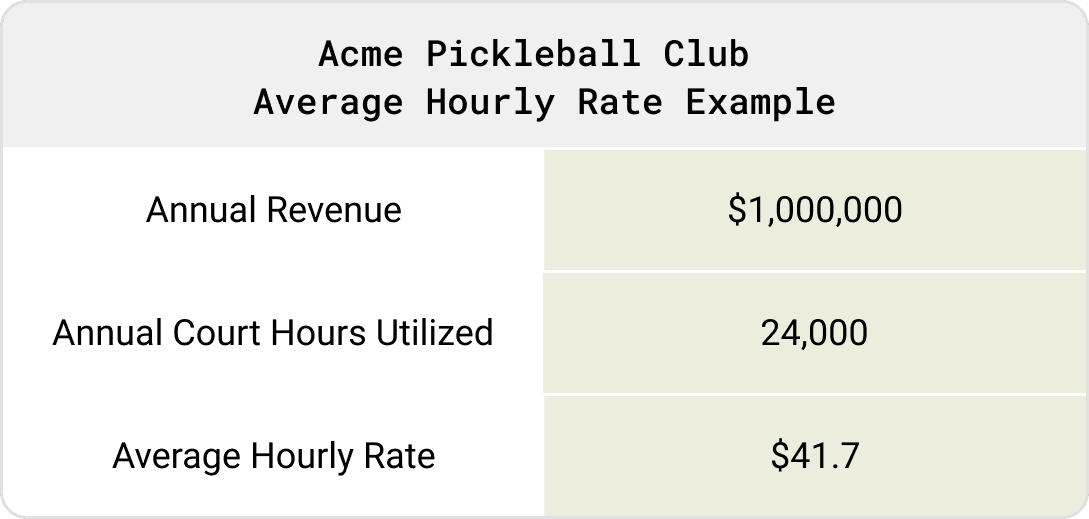
Using this revenue equation, we can map out the annual value of a 1% increase in court utilization at different average hourly rates. In our Acme Pickleball Club example, at an average hourly rate of $41.7, a 1% increase in utilization is worth more than $18,000 per year.
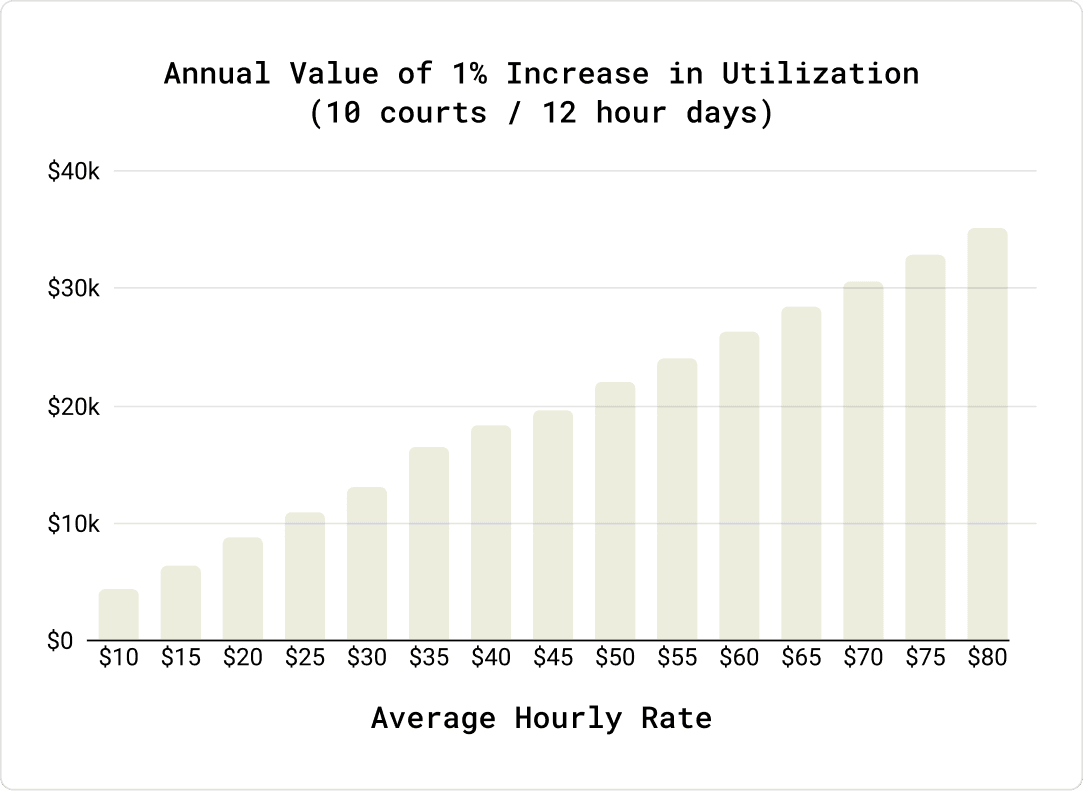
Small increases in utilization can yield large increases in revenue for a pickleball club.
Using the same revenue equation, we can map out the annual value of a $1 increase in average hourly rate at different levels of court utilization. In our Acme Pickleball Club example, at 54.7% court utilization, a $1 increase in hourly rate is worth $24,000 per year.
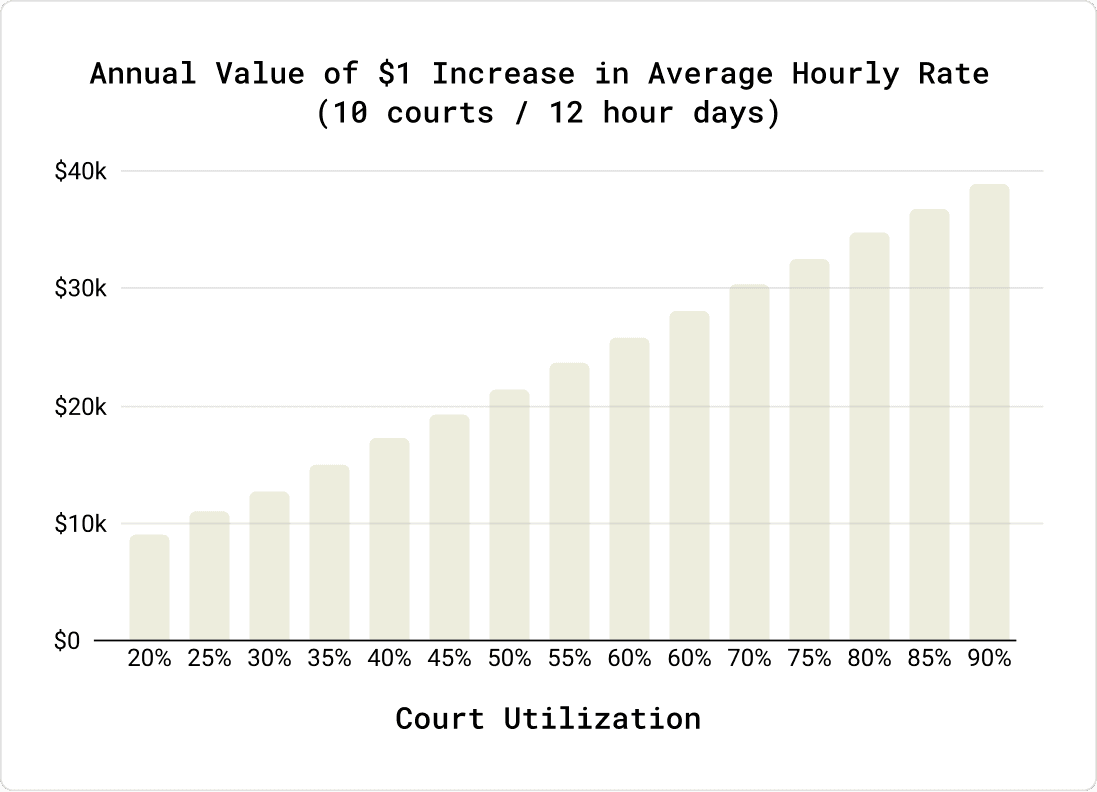
Small increases in average hourly rate can yield large increases in revenue for a pickleball club.
Imagine Acme could wave a magic wand and increase utilization 10% while simultaneously increasing average hourly rates?
No magic wand required!
PodPlay provides tools that can increase utilization and average hourly rate:
Putting it all together, we can map out the combinations of court utilization and average hourly rate required for Acme Pickleball Club to achieve different annual revenue targets.

This graph helps visualize two kinds of decisions that a pickleball club can make:
At PodPlay we prioritize the tools that power the latter.
Savvy pickleball club operators will analyze the various offerings they make available to customers in terms of impact on court utilization and average hourly rate. They will favor those offerings that increase utilization and average hourly yield, while remaining vigilant for those offerings that initially bend the revenue equation to the good but may have diminishing returns. Tournaments, for example, are a great way to increase utilization and average hourly rate. But if a club offered tournaments every day, it would likely have the opposite effect. Most customers don’t want to play a tournament every day!
Tech-enabled courts, coach connect, and algorithmic court assignment are some of the sought-after features of the PodPlay SaaS offering that help pickleball clubs bend the revenue equation to their advantage. Features that increase court utilization and average hourly rate help drive high returns on the investment in technology.
PodPlay gives venue operators all the tools they need to digitally manage a physical space: integrating video replays, digital scoreboards, and autonomous functionality with court reservation management, event management, coach connect, membership module, and payments.
Originally built to power PingPod, the network of futuristic autonomous ping pong clubs, PodPlay is now being used to manage venues across pickleball, padel, ping pong, soccer and pool, with more experience verticals to come.
If you’re interested in learning more about the PodPlay offering, request a demo.
Every great company has a Marty Supreme phase. It’s intense. It’s personal. It’s unbeatable—and unscalable.The companies that endure don’t abandon that phase. They encode it.
Jan 14, 2026
Autonomous experiences have flourished indoors, where we can control for weather, heat, and access. Outdoors–the largest segment of pickleball play–remained unsolved. The result: operators were forced to choose between the flexibility of outdoor courts and the efficiency of automation. Until now. PICKLETILE™ x PodPlay unlocks outdoor autonomous pickleball.
Dec 8, 2025